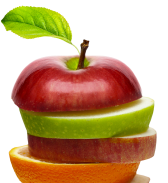Table Of Contents
Warrior Fast – Everything You Need to Know
The Warrior Diet is a variety of intermittent fasting created in 2001 by Ori Hofmekler, a well-known health and fitness writer. This eating plan is based on the notion that warriors used to workout on an empty stomach in ancient times. They would eat significantly less during the day and consume their prey at night. This eating and training regimen kept the warriors in shape.
The Warrior Diet Plan is a quick way to lose weight and fit. If no other diet plan works for you, you can try this diet plan because the Warrior’s Diet is similar to intermittent fasting. It is about feasting at night and fasting during the day. This helps keep calorie intake in check and prevents excessive fat build-up.
Warrior Diet Fasting
People who follow this diet fast for 20 hours and eat a maximum in the 4-hour window. You can eat anything (including unprocessed and sugary items) within the 4-hour window. There are no restrictions on food. But in your 20-hour fast, you’re encouraged to eat hard-boiled eggs, lots of fruits and vegetables, small amounts of dairy, and plenty of calorie-free liquids and water.
Benefits of the Warrior Diet
The warrior diet improves cognitive function, body composition, energy levels, and more. Let’s take a look at these claims to see if they are backed up by science or not.
Benefit 1: Improved Cognitive Function
Many people notice that they become calmer and calmer after 20:4 fast. Research on intermittent fasting supports these reports. Overeating has been shown to make us dumber. Our brains are wired to function optimally in times of food scarcity. This makes sense when you consider that when our ancestors were hungry, they had to be very good at hunting. Other animal studies show intermittent fasting reduces inflammatory markers, including TNF-a and IL-6. Reducing these inflammatory molecules can set the stage for better brain health and learning ability. Concurrent with these changes, intermittent fasting also increases neurotrophic molecules within the brain. While adequate levels of BDNF are linked to faster learning, lower levels are linked to neurodegenerative diseases, such as Parkinson’s and Alzheimer’s. Animal studies show that intermittent fasting can protect against Alzheimer’s disease.
Benefit 2: Better Body Composition
Most, if not all, forms of intermittent fasting are believed to promote weight loss, but The ultimate warrior diet takes this trend one step further. Its 20-hour fasting window speeds up calorie deficits, leading to rapid weight loss. A study looking at a 20-hour fasting protocol found that people who consumed calories within 4 hours lost more weight than those who ate an isocaloric diet with meals throughout the day. The fasted participants also gained muscle, even as they lost fat mass. Several studies confirm that IFs can promote weight loss even without dietary changes.
The Warrior Diet can teach your body to use calories more efficiently. During the meal, calories are distributed to the muscle mass; during vacation, the stored calories are used as fuel.
Benefit 3: Improved Energy Levels
Fasting is not only improving mental energy but also increases physical energy levels. Some people find it unusually productive during fasting 20 hours a day, likely due to the stabilization of blood glucose. Long periods without eating can help your body keep your blood sugar healthier, leading to more stable energy levels. Studies show that IF’s ability to stabilize blood sugar leads to decreased body weight and higher energy levels. Hormonal changes also play a role in quickly connecting energy. For example, the adrenal glands release hormones such as adrenaline and noradrenaline during fasting, allowing your body to reach a higher energy state.
Benefit 4: Reduced Inflammation
Chronic inflammation is one of the universal causes of disease. Inflammation is related to an increased risk of diabetes, cardiovascular disease, and cancer. Since intermittent fasting 20/4 reduces inflammation, it is perhaps unsurprising that simply not eating once was considered one of the universal healers. Modern research seems to confirm this eternal truth. Does the warrior diet work? According to the benefits above, it works efficiently when carefully planned and followed.
Does the warrior diet work? According to the benefits above, it works efficiently when carefully planned and followed.
Also, read – Anti-Inflammatory Diet
How Much Weight Can You Lose With 20 4 Fasting?
Many factors can influence how much weight you lose with fasting.
The common factor is the duration of the fast. For example, if you are only fasting for a day or two, you will likely not experience any weight loss because your body will be able to use its stores of glycogen and fat for energy.
However, if you fast for more extended periods, such as two weeks, you might lose weight because your body will have used up all its glycogen and fat stores and started to break down muscle tissue for energy.
So, how much weight can you lose by fasting 20 hours a day?
It depends on your goal and how many calories you cut out of your diet daily. If you’re looking to lose weight, the number of calories you cut daily will determine how much you lose.
Warrior Diet Meal Plan
With the Warrior Diet, you eat tiny (and specific foods) for 20 hours a day, and for the other 4 hours, you eat as much as you want, with no calorie limit. But there are limits to what you can eat: Processed foods are discouraged throughout the diet, so no sweets, chips, fast or fried foods, or sugary drinks are allowed.
The first phase of the 20 4 fasting schedule is the “detox” week. During the 20 hours, you can have small amounts of certain foods (such as raw fruits and vegetables, hard-boiled eggs, and small amounts of dairy products), as well as water, coffee, and tea. Therefore, during the 4-hour feeding window, eating a salad with oil and vinegar, along with plant-based foods, preferably unprocessed (such as beans and cooked vegetables) and grain-free cereals, is suggested.
During phase three, the third week, the warrior foods remain the same for 20 hours; for the 4-hour window, people alternate between higher and lower carb days throughout the week.
During phase three, the third week, the foods remain the same for 20 hours; for the 4-hour window, people alternate between higher and lower carb days throughout the week.
After these three stages, Hofmekler suggested that people repeat the pattern of set one/two/three. But those who follow the warrior diet weight loss plan often follow a 20:4 pattern (eating very little or nothing except during the 4-hour window) after completing all three phases, focusing on high-protein, low-carb foods, and sticking to a low-processing diet.
What To Eat On Warrior Diet
There are differences between the two feeding periods regarding what you should and shouldn’t eat on the warrior diet.
This is how to do the warrior diet, eat:
- Raw fruit, such as apples, bananas, kiwis, and mangoes.
- Vegetable juice, such as beet and carrot juice
- Broth, both chicken and beef
- Raw vegetables, such as peppers, carrots, mushrooms, and greens
- Olive oil and apple cider vinegar
- Dairy products, including yogurt and cottage cheese
- Protein from hard-boiled eggs
- Calorie-free beverages such as coffee, tea, and water.
During the four-hour eating window, you should consume these foods for 20 4 intermittent fasting weight loss results:
- Cooked vegetables, such as cauliflower, kale, zucchini, greens
- Protein, from chicken, steak, fish, turkey, eggs
- Starches, such as beans, potatoes, corn, and sweet potatoes
- Cereals, including oatmeal, quinoa, pasta, bread
- Dairy products, such as milk, cheese, and yogurt.
- Fats, oils, and nuts
And along with the foods you should eat come some foods you should not eat in the ultimate warrior’s diet. These include:
- Confectionery
- cookies and cakes
- French fries
- fast food
- Fried food
- processed meats
- refined carbohydrates
- Artificial sweeteners
- Sweetened drinks
These processed foods can be addictive and lead to withdrawal symptoms, such as headaches, during fasting. Processed foods also offer little nutritional value and should be considered calories wasted during the 4-hour consumption period.
6 Sample Recipes of Typical Day’s Worth of Food for The Warrior Diet
The Warrior Diet is a high-protein, low-carbohydrate diet. It also includes plenty of vegetables and healthy fats. The diet was created by Ori Hofmekler, author of The Warrior Diet book.
There are three sample recipes for the Warrior Diet that we propose:
- Breakfast.
Oatmeal with berries and almonds.
One hard-boiled egg, two tablespoons of almond butter, and one cup of coffee.
- Lunch.
A big salad with chicken breast, avocado, olive oil, and balsamic vinegar dressing.
A turkey sandwich on whole wheat bread with avocado slices.
Add a little olive oil and balsamic vinegar to taste.
- Dinner.
Grilled salmon with broccoli and asparagus.
A salad with grilled chicken or shrimp.
Add a little olive oil and balsamic vinegar to taste.
How to Train for Warrior Diet Results 1 Month?
There are many ways to train for the results in 1 month warrior diet, but they all include eating two meals per day and restricting calories to lose weight. Also, you need to remember these three rules:
- Eat only between 12 pm – 8 pm (4 hours).
This will allow your body to go into ketosis, the state where it burns fat as fuel instead of carbs.
- Eat protein at every meal (especially breakfast).
This will help you preserve your muscle mass and burn fat more efficiently.
- Drink at least 2 liters of water daily.
Sufficient water accelerates metabolism and controls carbohydrates.
Finally, if you want to train for a 1-month warrior diet, then there are some things that you should do beforehand. First, you need to have a plan and make sure you are willing to commit. Remember that this is not something that you can do on a whim and expect to see results in just one month.
Still in Doubt – Make Convinced Thanks to the Warrior Diet Reviews!
“The idea is simple (self-explanatory) but counter-cultural; you will seem odd to your friends, family, and colleagues because you will not constantly be “refueling” throughout the day. However, they will marvel at your endless supply of energy, focus, and productivity once you adapt to this eating pattern. At the same time, they are left in a fog from an “overloaded brain,” riding a sugar high or just constantly focused on food. You’ll love the daily pattern of getting out of the day with a hearty meal (or two), relaxing, re-energizing, deep sleep, and being ready to rise and “take on the day” the next day.”
Anna, 27 years old.
“I am now 47 years old. I have continued to do intermittent fasting most days (usually 16-hour fasting/8-hour eating window) for the past few years and have maintained my weight for the most part. Over the past few weeks, I have returned to more intermittent fasting. My daily routine is closer to the warrior diet (20-hour fast / 4-hour meal window). The warrior diet is an excellent place to start for more advanced intermittent fasting, and it works. I’m now below my starting weight, and I’m below 10% body fat (I can see my abs), and the best part is that it was super easy (FYI – the only cardio I do). The concept is fantastic!”
Bill, 47 years old.
“Being vegan, I tried the warrior diet. I fully agree with intermittent fasting, it has worked for me so far, and I feel comfortable with it. However, the warrior diet method of eating emphasizes overeating at night. In my case, consuming over 1000 calories a night was stressful for my digestive system, but I quickly adapted. My blood pressure improved, and my sleepiness disappeared. I did not intend to lose weight, so I kept myself in good shape. In general, the warrior diet is an incredible find!”
Emma K., 32 years old.
Before and After – You May Hardly Recognise Yourself With Warrior Diet!
You feel light and energetic when you are on the warrior diet. You can lose up to 10-15 pounds in a week. You realize your body is shrinking, but you will be able to fit into your old dresses.
This nutrition plan is gaining popularity among dieters. However, there is no scientific background, and several side effects could lead to serious health problems.
Therefore, before following the warrior diet, consult a health professional. A healthy diet is essential to achieve a strong and lean body.











Thank you for sharing this comprehensive overview of the warrior diet and its incredible benefits. After learning about the warrior diet results 1 month, I am truly inspired to give it a try.
Hi, Jessica 👋
Delighted to hear you found the overview helpful.